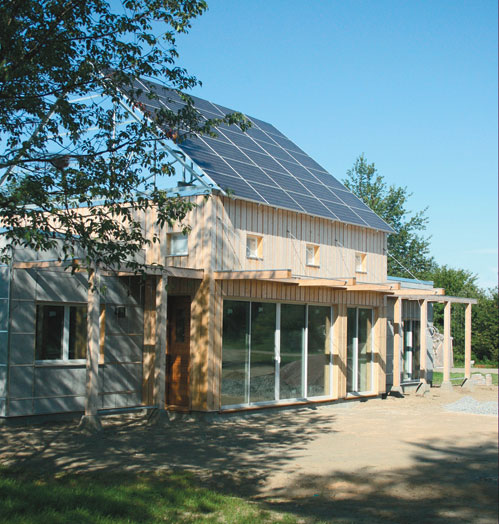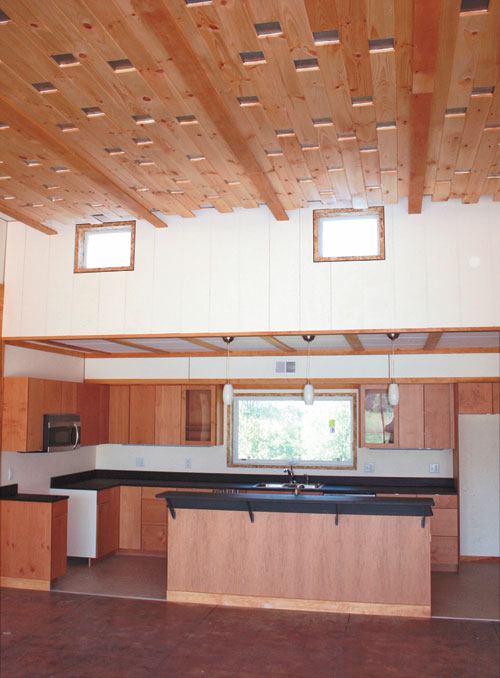Prefabrication's Green Promise
A few architects have taken on the challenge of greening prefabrication, designing and building super-green prefabs. Most work with existing factories to create their product and offer differing degrees of customization. Others have started their own factories so that they can control the process and the quality of the final product. Unfortunately, these firms remain the exception in the industry, which remains devoted to the basic homes that have served it well over the past several decades.
Â
 |
This net-zero-energy timber-frame home in Unity, Maine, was built by Bensonwood Homes and features prefabricated insulated panels. Photo courtesy Mark Tardiff, Unity College |
Â
Quincy Vale, president of PowerHouse Enterprises of Lawrence, Massachussetts, works with a handful of different factories in the Northeast to build the modular homes his company designs. Negotiating designs with outside companies can be difficult, he says, because "when they say [they can do] almost anything, there are actually a lot of things that they can't or don't want to do." Among those are some of the greener aspects of construction. "We've spent a lot of time teaching these companies how to build a greener module," Vale says, incorporating everything from added insulation to paints with low-VOC levels.
For a recent project in Cambridge, Massachusetts, PowerHouse worked with Epoch Homes, located in Pembroke, New Hampshire, to build two green modular townhouses for an urban lot. For some companies, the specifications for the PowerHouse project-designed to achieve a Platinum LEED for Homes rating-would disrupt the production line, resulting in additional fees. For Epoch, however, the project was business as usual, and part of the company's overall move towards green construction. According to president and CEO John Ely, the company builds only custom homes, an increasing number of which are built to green specifications. Ely argues that building custom homes in this way is really no more difficult than building standard models: the company develops basic operating procedures for building elements and combines them to create the house.
Â
 |
The panels that make up the skin and walls of the house are prewired for electricity and plumbing, and interior walls are movable for flexible space. Image courtesy Open Prototype Initiative |
Â
Like many companies, Epoch has seen an increased demand for green homes in the last couple of years. Rather than picking a single green standard to build to, however, the company has chosen to let their customers decide. "There are a lot of different views right now on what green means. We try to respond to what the customer wants and give as much guidance as we can," says Ely. He argues that this approach is more effective at introducing green building to the mainstream market than the practice of offering specific green home models or features. Many of the firms making green modular housing offer only a few models with several customizable options, he says, and "home-owners want more options than that."









